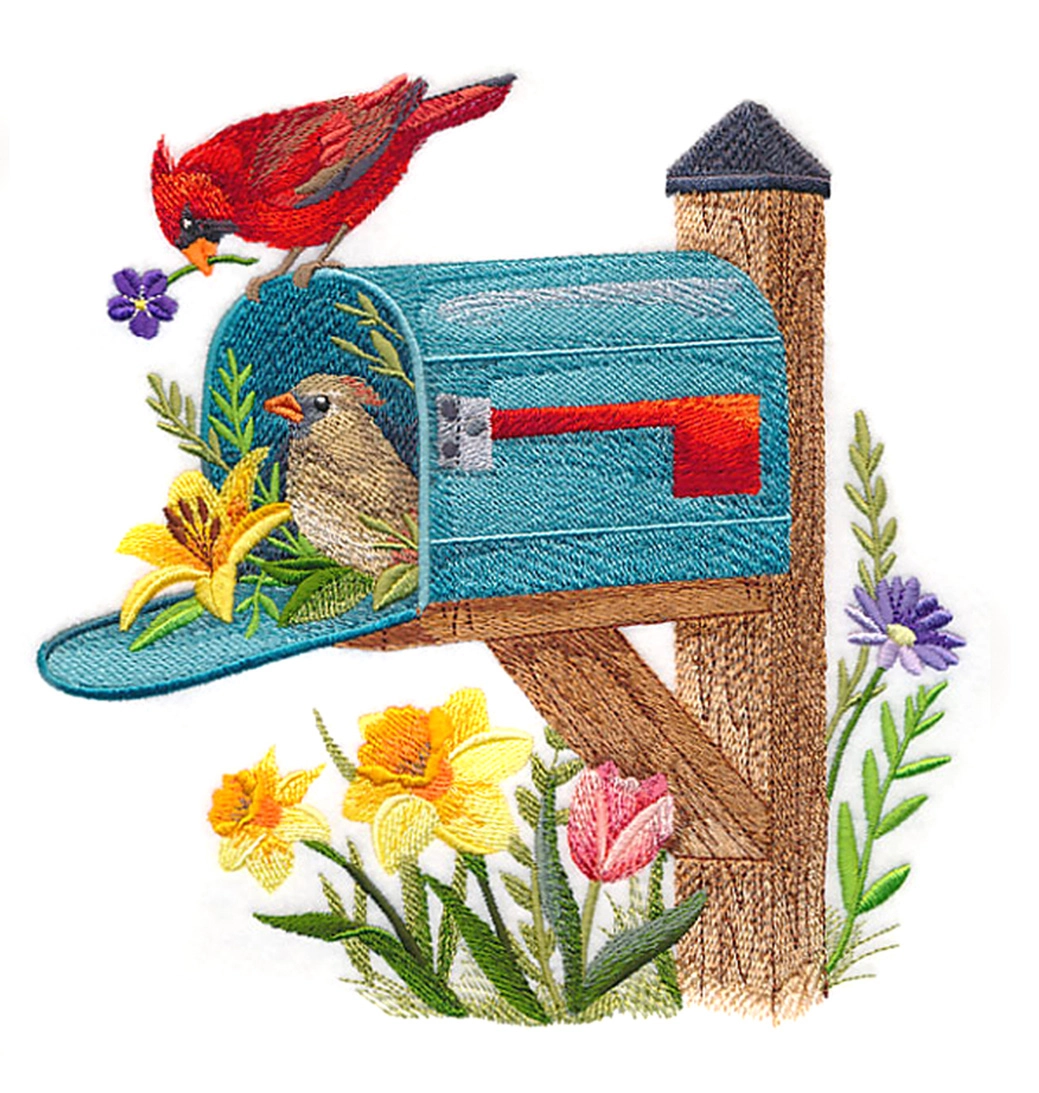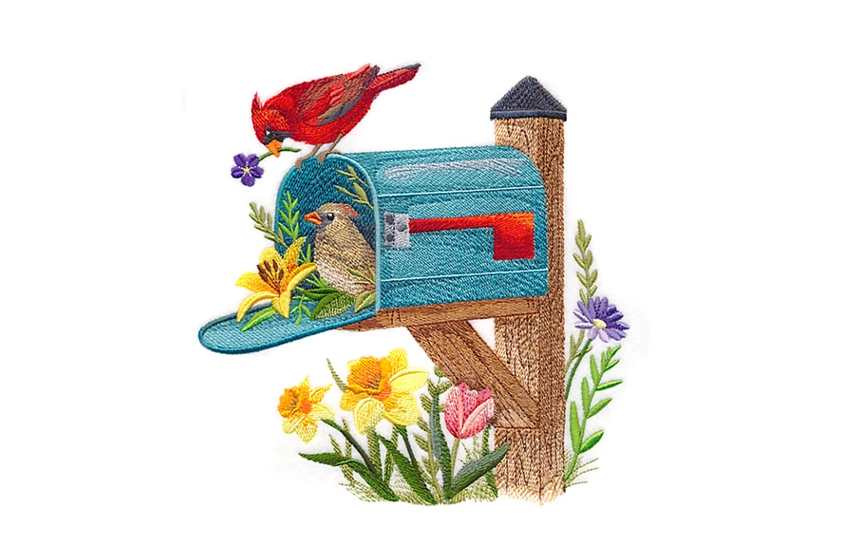So many of you loved the original Organza Angel in 3D, we've created two new designs to join this heavenly host! Stitch up these beautiful little girl and boy angels in freestanding lace with accents of organza, then assemble following the step-by-step instructions below. These angelic designs make delightful decor for holidays, first communions, and more!
Supplies
Project Needs & Notes:
- Embroidery thread
- 1/4 yard of organza
- Water soluble stabilizer
- Temporary spray adhesive (such as Gunold KK100)
- Scissors
- Ribbon for hanger (optional)
- Hand sewing needle & thread or glue
Designs featured in this tutorial include:
- X14557, Organza Angel in 3D - Girl (Lace)
Special Notes:
To make a full little angel, embroidery 3 of file "a" and just one of files "b", "c", and file "d".
Designs Used
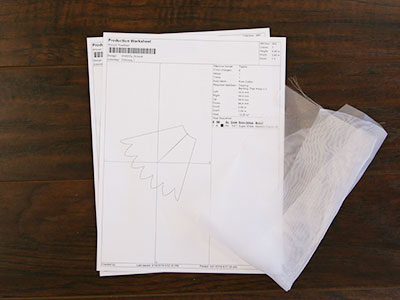
When you download a lace organza little angel design, you will find multiple files. Some are the embroidery files, and the others are dieline files marked with the letters "DL". Dielines are used to cut the fabric to the correct shape and size.
Open each dieline file with an embroidery software, and print it. If you do not have embroidery software, Wilcom TrueSizer is a free program to use.
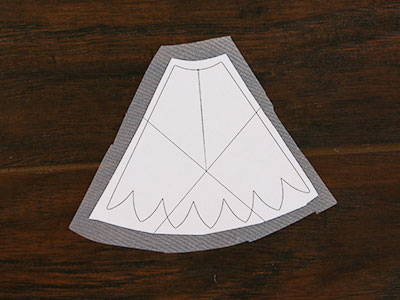
Spray the back side of front dieline printout with temporary adhesive, and smooth it on the right side of the fabric.
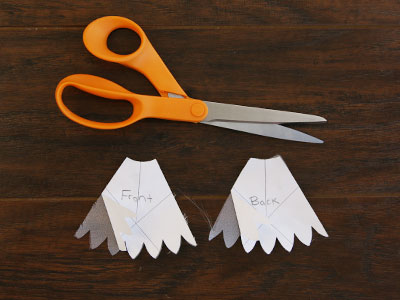
Cut out the shape and repeat to make the back dieline piece.
After cutting, fold up one corner of the paper dieline to make it easier to remove later. Labeling the pieces on the paper dielines can also help keep them from being mixed up.
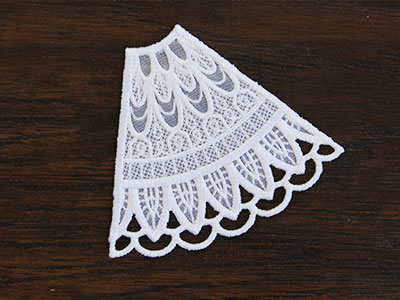
Lace organza designs have been specially digitized for water-soluble stabilizer. After the stabilizer is removed, beautiful lace and organza remains
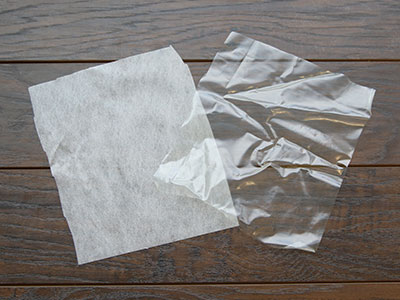
There are a couple of different kinds of water-soluble stabilizer.
One is clear and plastic, and that brand is Sulky Ultra Solvy. The other is soft and fibrous, called Vilene. Both will work very well. Vilene is used in this demonstration.
Use a size 11 or 75/11 sharp sewing needle. A sharp sewing needle has a smaller, finer point than an embroidery needle. That means it will make smaller holes in the stabilizer.
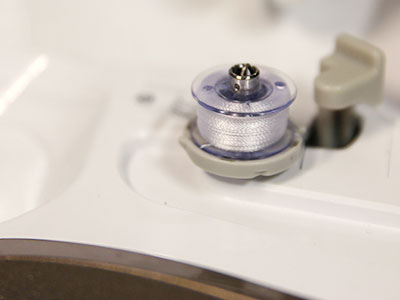
As the freestanding lace organza will be seen from both sides, wind a bobbin with the same thread that is being used in the top needle.
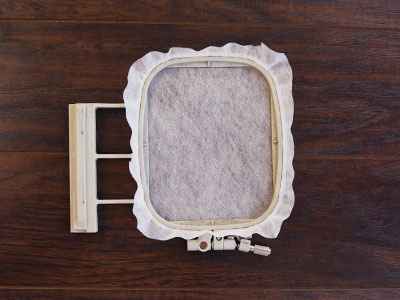
Hoop the stabilizer firmly. Make sure it is nice and tight with no wrinkles.
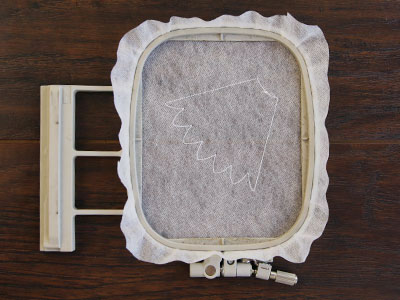
Load the embroidery file on the machine (not the dieline file), and embroider the design. The first thing to embroider will be a dieline, or outline stitch. This marks the area on the stabilizer where the fabric piece will be placed.
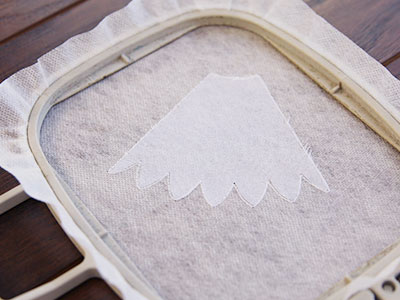
Remove the hoop from the machine, but do not unhoop the stabilizer. Spray the back of the front piece with temporary adhesive, and smooth it in place right inside the sewn dieline.
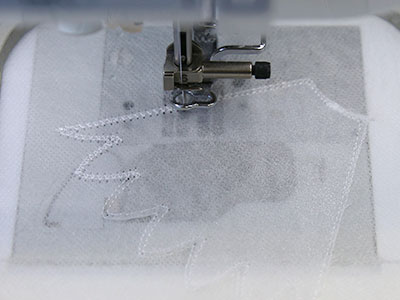
Reattach the hoop to the machine and continue with the design. A tackdown will sew next. This binds the front fabric piece to the stabilizer for the remainder of the design.
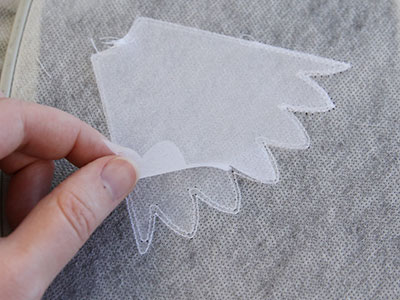
Look at the color change sheet, and stop the machine before sewing "back piece tackdown". Remove the hoop from the machine, but do not unhoop the stabilizer.
Spray the back side of the back dieline with temporary adhesive, and place it on the back of the embroidery.
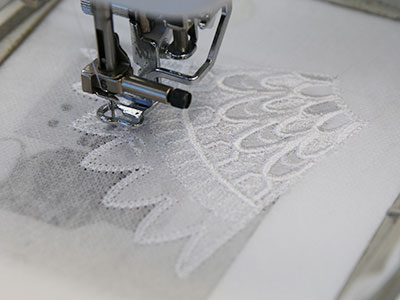
Place the hoop back on the machine, and embroider the "back piece tackdown". Next, all of the inner elements will sew, followed by the satin edges and lace borders.
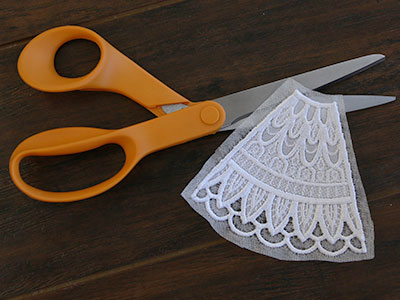
After embroidering, trim away the excess stabilizer.
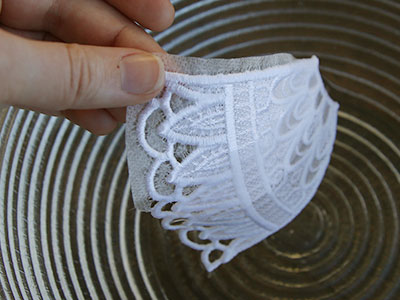
The stabilizer's packaging should give instructions for removing the remaining stabilizer. For Vilene, soak the organza pieces for a few moments.
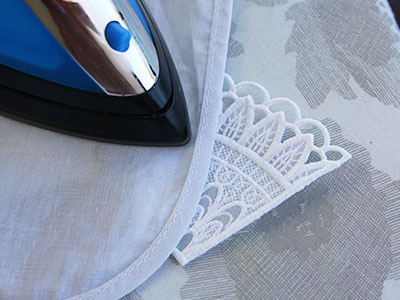
Let the piece air dry, then press using a pressing cloth.
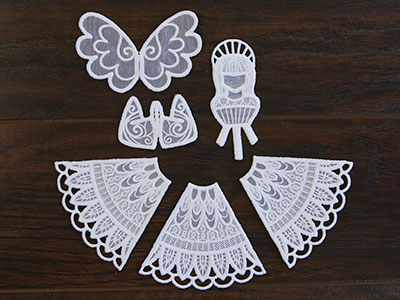
Repeat the previous steps to prepare and embroider the remaining lace organza pieces (labeled with a "b", "c", and "d").
To make a full little angel make sure to embroider 3 of file "a", and just 1 of files "b", "c", and file "d".
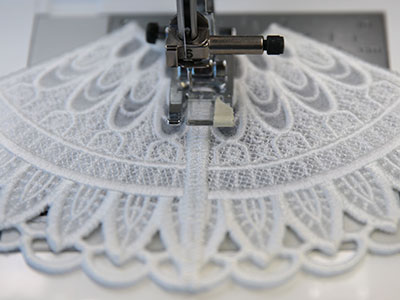
To assemble the little angel, take two of the skirt pieces (file "a"), and sew them side by side using a zigzag stitch on a sewing machine.
Make sure both right sides are facing up, and that the bobbin and top thread match the thread used in the embroidery.
For best results use a zigzag stitch that is wider (about a 6mm width) and a more condensed zigzag length (about a .08mm length).
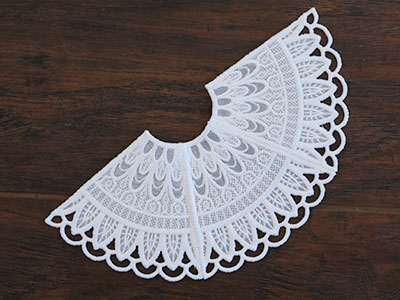
Then repeat to sew the third skirt piece onto one side of the other two.
Make sure all right sides are still facing up and to use matching thread.
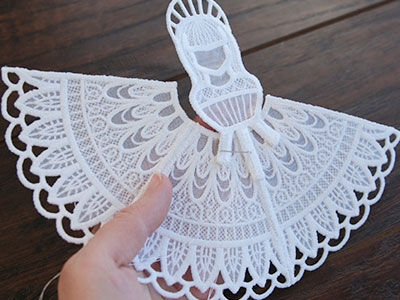
With wrong sides together, line the center tab of the body (file "b") up with one of the zigzag skirt seams.
Line the bottom edge of the shirt up with the top of the skirt. Use a hand sewing needle and thread or hot glue to tack it into place.
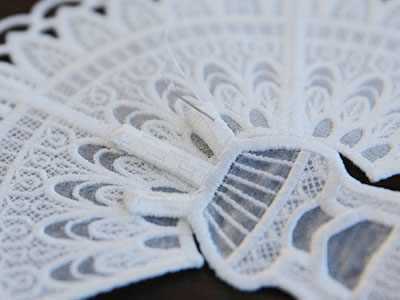
Repeat to sew or glue the other two body tabs onto the skirts.
For best results, always make sure that the bottom edge of the shirt and the top edge of the skirt match up. Don't worry if the body bends a little bit due to the curve of the skirt's top edge.
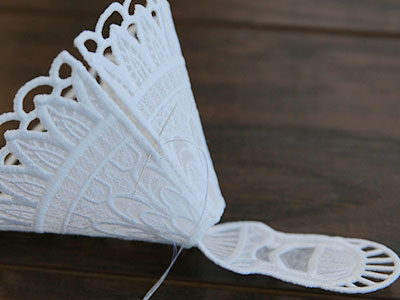
Once the body is sewn securely onto the skirt, curve the skirt into a cone, and match up the two remaining long sides.
Make sure the right side of the skirt is facing out, and the tabs of the body are on the inside where they won't be seen. Then hand sew or glue the final two skirt edges together.
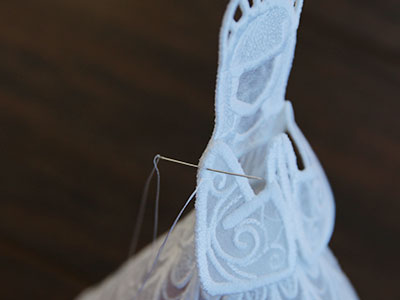
Then take the arms (file "c") and match the right shoulder up to the right shoulder on the body.
Make sure the wrong side of the arm is against the right side of the body.
Match up the edges, and sew or glue from the top point of the shoulder down about 1/4" around the outside edge of the arm.
Repeat for the left side. The arms will curve outwards away from the body once both shoulders sewn.
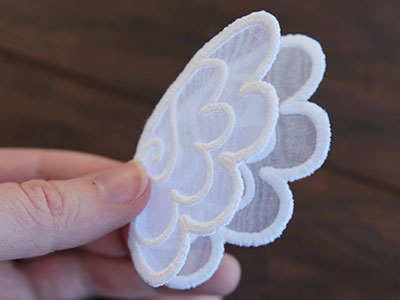
Take the wings (file "d") and fold them in half with wrong sides together. Crease the fold with your fingers.
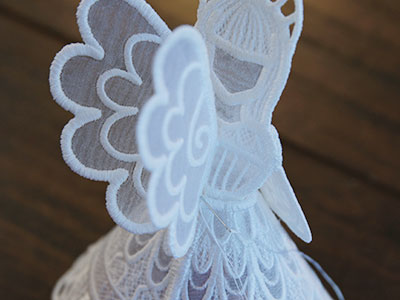
Then place the right side of the wings against the centerline of the body.
Line the top of the folded edge up with the horizontal line on the angel's shirt. Then hand sew or glue the wings onto the body along the folded edge.
If gluing, hold them in place until the glue completely dries.
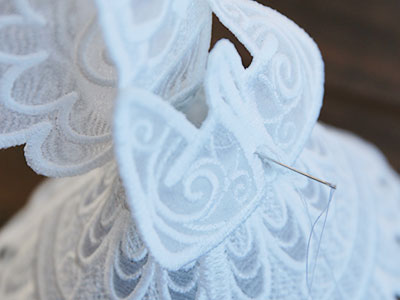
To help the angel stand up straight, sew or glue the bottom of the hands to the top center edge of the skirt.
This will make the angel more sturdy and secure while hanging or standing.
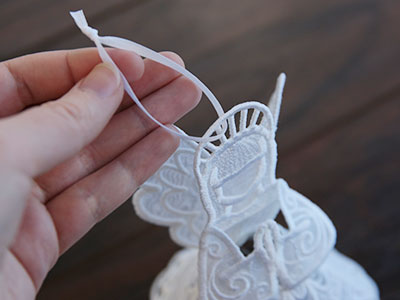
To add a hanger, cut a 7" length of ribbon, and thread it through one of the top openings in the halo. Tie the ribbon into a loop and hang as desired.

